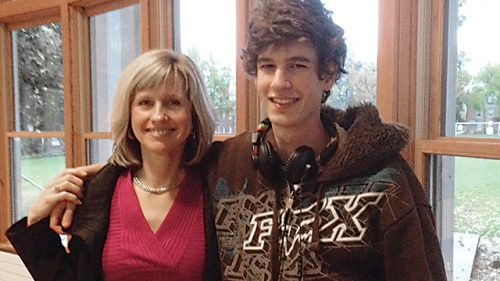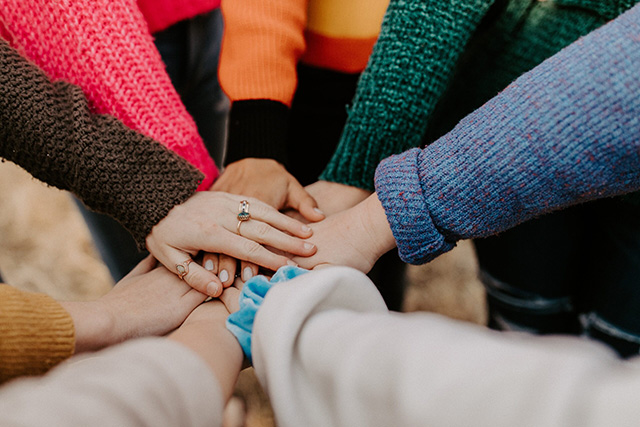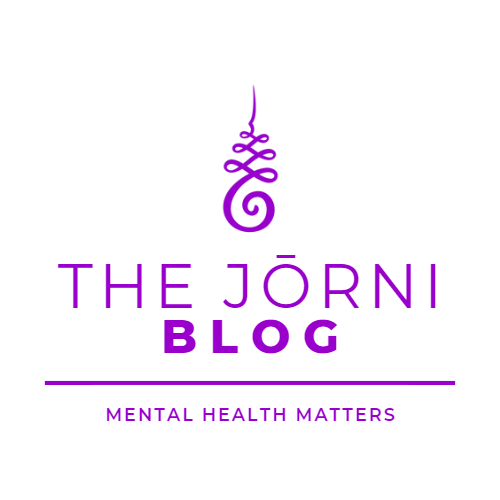Navigating the Shadows Together
Talking about suicide can feel extremely challenging because of the taboos and stigmas that surround it. We often experience fear and discomfort when trying to openly discuss such a sensitive topic. Unfortunately, these emotions can prevent direct conversations about this important issue. Moreover, societal stigmas associated with suicide can lead us to feel isolated, preventing crucial conversations and the support that can make a real difference.
In our world, shaped by a diversity of experiences and challenges, the conversation around suicide becomes essential. The purpose of highlighting suicide awareness and prevention is to equip us with practical insights - how to know the signs of someone in distress, offer assistance, and access support when it is most needed. As we navigate this intricate subject, we need to foster understanding and promote discussions that could ultimately save lives.
“This life. This night. Your story. Your pain. Your hope. It matters. All of it matters.”
- Jamie Tworkowski
One of the most difficult things is to know when someone you love may need help. People left behind often say they didn’t know their loved one was in distress and needed support. So, how do we become more aware? How do we know when someone needs help? And how can we extend help when needed? The answer is by talking about it and doing our best to destigmatize suicide and suicide awareness and prevention.
A Beacon of Hope in Suicide Prevention
AnneMoss Rogers stands out as an authority on mental health and suicide education. As a professional speaker, trainer, and consultant, she has shared her insights on platforms like TEDx and is a certified suicide prevention trainer. Her award-winning memoir, Diary of a Broken Mind, delves deep into her personal journey, especially after the tragic loss of her 20-year-old son, Charles, to suicide in 2015.

This heart-wrenching experience led her to pen a newspaper article that resonated with countless readers, making it go viral. AnneMoss’ blog, Emotionally Naked, has touched the lives of millions. On August 24, 2021, she co-authored her second book, Emotionally Naked: A Teacher’s Guide to Preventing Suicide and Recognizing Students at Risk, alongside Dr. Kimberly O’Brien.
Shedding Light on Suicide
The World Health Organization (WHO) estimates more than 700,000 people die by suicide each year. Globally, suicide is the fourth leading cause of death in 15-29-year-olds. Let those numbers sink in and you start to get a picture of why we desperately need to talk about suicide. But, suicide isn't just numbers and statistics; it carries the weight of unique lives - friends, family members, colleagues, and acquaintances - who are no longer present in our lives.
Unveiling the Reality
At the core of our exploration is the genuine recognition of suicide's unadorned reality. These statistics aren't just numbers; they represent life stories interwoven with dreams, aspirations, and emotions. Each statistic is a reflection of an individual who has laughed, cried, and navigated the complex tapestry of existence. By grasping this profound reality, we move beyond a number on a paper, stepping into the shoes of those impacted. This shift in perspective empowers us to confront suicide with renewed urgency and a heart full of compassion.

The Role of Compassion in Suicide Prevention
Compassion becomes our guide as we explore suicide and suicide prevention. It serves as the foundation that allows us to create a haven, where individuals who are suffering can take a breath, and unravel the layers of their struggles without fearing judgment or rejection. When we approach the subject of suicide with compassion, we communicate our readiness to listen, understand, and offer support. Every person, including ourselves, has grappled with challenges and difficulties. By embracing these shared human experiences, we can create bridges that unite us all on a profound level.
Recognizing the Signs of suicide
Sometimes there are no signs. And we often have to come to terms with that, wondering “why?”. But, more often, there are subtle signs we can see, if we become aware and start observing and listening to those around us. Someone we know or love may be struggling in silence, afraid to say anything. Trusting our ability to recognize and understand these small signs can prove to be not just important, but potentially life-saving, affording us the opportunity to intervene when it matters most.
Withdrawal and Isolation
Withdrawal from social interactions and activities once held dear might signify much deeper struggles beneath the surface. This gradual distancing from others could be a silent plea, a way of conveying the emotional weight being carried that words can't quite express. If you notice your loved one retreating into themselves, reach out and check on them.
Mood Fluctuations
Significant variations between periods of deep sadness and sudden increases in energy or irritability may indicate emotional distress. These mood changes can be indicative of internal emotional conflicts and highlight the need for timely intervention and support. Recognizing these shifts can be the first step in initiating a conversation that may lead to support or professional help.
Expressions of Hopelessness
When someone openly talks about feelings of helplessness or being a burden, it is an important signal that they may be in need of immediate support. These statements can be serious indicators of emotional suffering and should not be dismissed. Addressing these expressions promptly can make a difference in getting someone the help and support they need.

Giving Away Possessions
The unexpected decision to give away valued belongings may be a significant sign of emotional distress. This action could be an attempt to seek closure or a feeling of control amid internal chaos. If you notice this happening, it can serve as an important cue to engage the individual in dialogue and consider involving more help and support as needed.
Behavioral Changes
Sudden changes in sleep patterns, appetite, or previously stabilizing routines can serve as indicators of emotional distress. These observable changes often mirror the emotional struggles someone might be experiencing privately. Paying attention to these shifts may allow for early intervention, helping the individual seek appropriate help and support.

Preoccupation with Death
Frequent talk about death, the process of dying, or a persistent wish to end one's life is a serious warning sign. Though these topics can be difficult to approach, they represent a critical call for help and must be addressed. Immediate and careful attention to these signs could be a life-saving measure, leading to timely intervention.
Understanding these signs requires a compassionate yet vigilant approach. While not everyone who exhibits these behaviors is necessarily at immediate risk of suicide, recognizing these signs enables us to offer timely help to those who may be suffering in silence. By being alert to these indicators, we can act as connectors between those in need and the support that could be crucial in saving a life.
Extending a Helping Hand
In a world where we all encounter both challenges and joys, the act of extending support and kindness can have a lasting, meaningful impact. Through simple but important gestures, we create a supportive atmosphere for everyone, including those of us who may be struggling. This support network can serve as a lifeline in times of crisis and despair.
Listening with Open Hearts
Having someone who is a good listener is invaluable when we face emotional hardships. It's not about providing all the answers or a magical solution; it's about creating a space where open conversations can happen. By listening attentively and without judgment, we validate the experiences and struggles within ourselves and our community. Such active listening is a pillar of compassion and connection in a world that often seeks quick fixes and instant gratification. It fosters a sense of belonging, making it easier for each of us to share and seek support.
Gentle Expressions of Concern
Talking about emotional or mental difficulties requires a sensitive touch, as these are delicate topics for many of us. A gentle expression of genuine concern can act as a light in the dark, reminding us all that a caring community surrounds us. These moments of kindness let us know that our emotional wellbeing matters and that support is available when we need it. Such gestures, however small, build trust and encourage an open dialogue about mental health.
Encouraging Professional Help
While personal support is invaluable, there may be some limits to what it can achieve in terms of mental health. This is why advocating for professional support can be important in times of need. Expert guidance can offer specialized care and resources, helping us better navigate the complexities of our emotional experiences. This encouragement often serves as the catalyst for seeking comprehensive solutions, and often includes holistic solutions like coaching, complementary approaches, and professional mental health support.

The Power of Staying Connected
In a world where feelings of isolation can creep in, staying connected holds immense power. Even simple gestures like sending a text message or making a call can remind us all: "We are not alone". Consistent communication stands as a testament to a network of support that's always there, ready to lend a hand. By maintaining these connections, we reinforce the idea that our community is a continuous source of strength and encouragement.
Seeking Help: the Way Forward
In life's complex landscape, filled with challenges and uncertainty, the steps toward healing and hope require notable courage from all of us. Understanding that asking for help is an act of strength rather than a sign of weakness is crucial. Acknowledging our struggles and fostering hope for better days is an act of resilience. When we find ourselves in difficult moments, reaching out for support is not a surrender, but a proactive step toward wellbeing. This commitment to confronting difficulties and embracing change is a testament to our collective resilience and dedication to growth.
Embracing Hope
Amid adversity, holding onto hope serves as a vital support for us all. This means acknowledging that, even through hardships, the possibility of a brighter future remains within reach. Hope isn't a denial of current struggles; it's a recognition of our collective ability to overcome and build a better future. By nurturing hope, we infuse our paths with purpose and resilience, which can sustain us even in the darkest times.
Professional Resources for Suicide Prevention
During immediate crises, quick action is crucial. It's important for all of us to know when to reach out to emergency services or crisis hotlines, which exist to offer immediate help and safeguard wellbeing. Long-term, it's equally beneficial to consider the support of coaches, practitioners, and mental health professionals who can guide us through emotional complexities with specialized knowledge. Investing in these resources is an investment in our overall wellbeing, reinforcing our commitment to a healthier future.

Supportive Circles
Throughout our healing journey, we should remember that a community of support surrounds us, be it family, friends, or broader networks. Engaging with this supportive circle provides comfort and helps dispel feelings of isolation, reminding us that we belong. By sharing our challenges within a compassionate community, we bolster our resilience and are empowered to continue on our path toward wellbeing.
Self-Care and Resilience
Prioritizing our own wellbeing is integral to the journey of healing. Self-care is a necessary and responsible act, allowing us to maintain our physical, emotional, and mental health. Whether it's participating in activities that bring joy, practicing relaxation techniques, or simply getting enough rest, these acts of self-care fortify our resilience. Acknowledging that setbacks happen and allowing ourselves to seek help when necessary equips us with the tools to recover and continue moving toward a more hopeful and healthy future.
By embracing these pillars of support, we not only navigate our own challenges more effectively but also create a compassionate environment where each of us has the opportunity to thrive. In doing so, we contribute to a community rooted in understanding, empathy, and collective wellbeing.
The TAKEAWAY
Addressing suicide prevention is not an isolated endeavor but a collective responsibility that demands our utmost attention and action. It's not merely an issue for mental health professionals to tackle behind closed doors; it's a critical societal concern that touches each of us. By openly discussing suicide and its prevention, we challenge the prevailing stigmas and open the doors for more supportive, life-saving conversations. Acknowledging the issue makes it less of a taboo and more of a critical concern we can actively address.

The role we can all play in suicide prevention is not marginal—it's monumental. From being alert to the signs of emotional turmoil among us, to encouraging professional intervention, our actions can be a lifeline. This isn't just about alleviating individual suffering; it's about creating an environment where the risk factors for suicide can be recognized and mitigated collectively. When we prioritize suicide prevention, we aren't just saving lives; we are making a robust societal statement that every life is invaluable and worth fighting for.
So, why focus on suicide prevention? Because the ripple effect of a single loss impacts us all - families are torn apart, communities are left distraught, and we are all impoverished in our shared human experience. Each intervention that prevents a suicide not only saves a life but also paves the way for recovery and mental wellness.
As we go forward, let's remember that suicide prevention isn't someone else's problem - it's a vital part of our shared human experience. Let's commit to making suicide prevention a common goal we all actively work towards.
By taking concrete steps together - whether that's educating ourselves, reaching out to those who are struggling, or advocating for resources - we not only save lives but also create a stronger, more supportive community for everyone.

